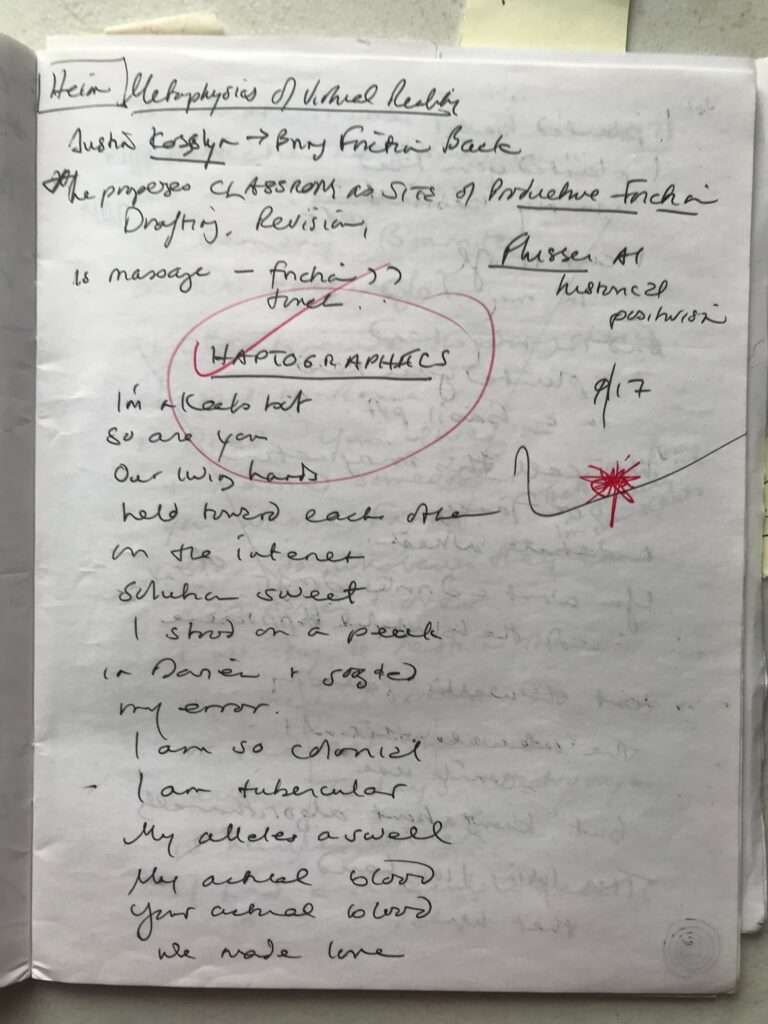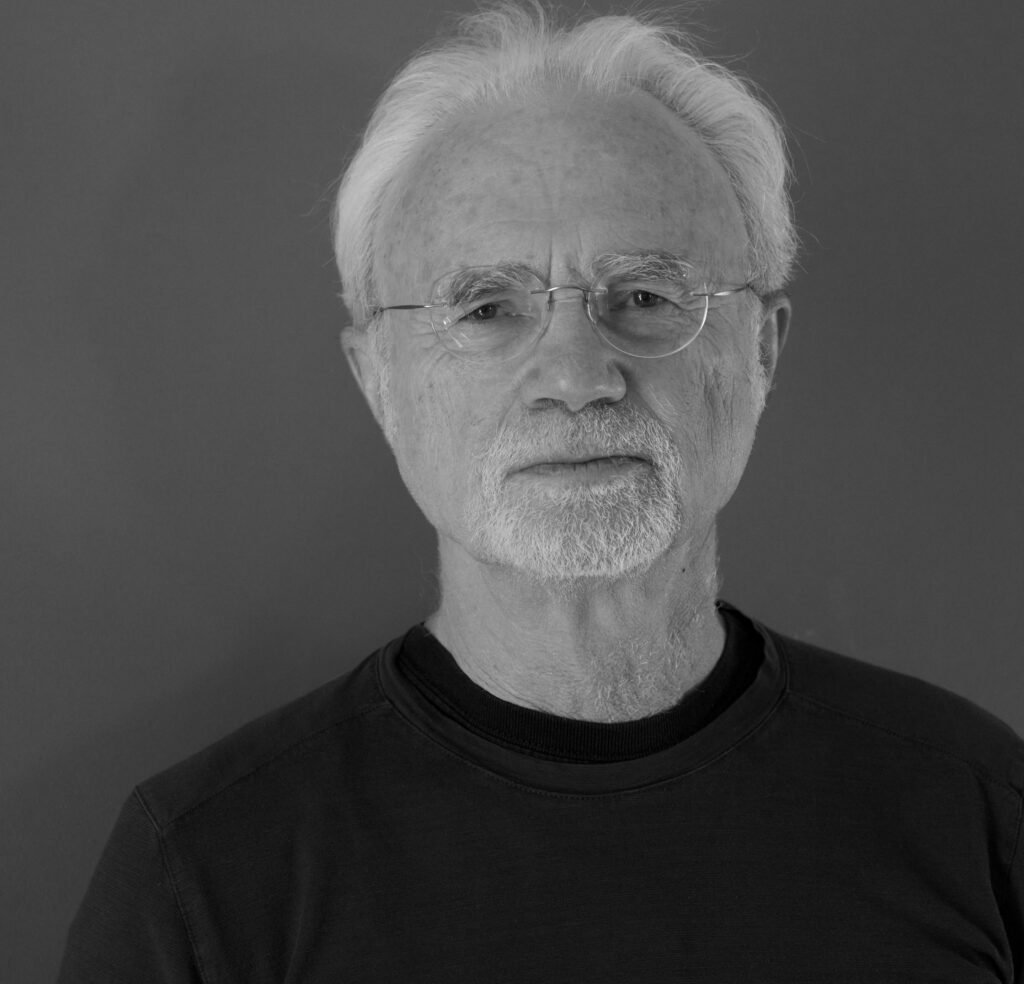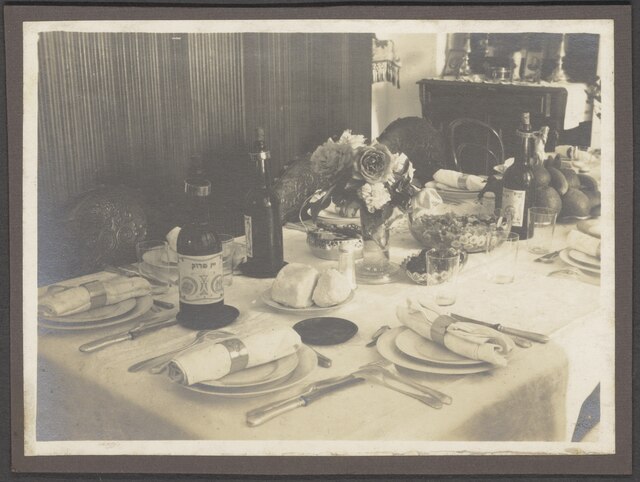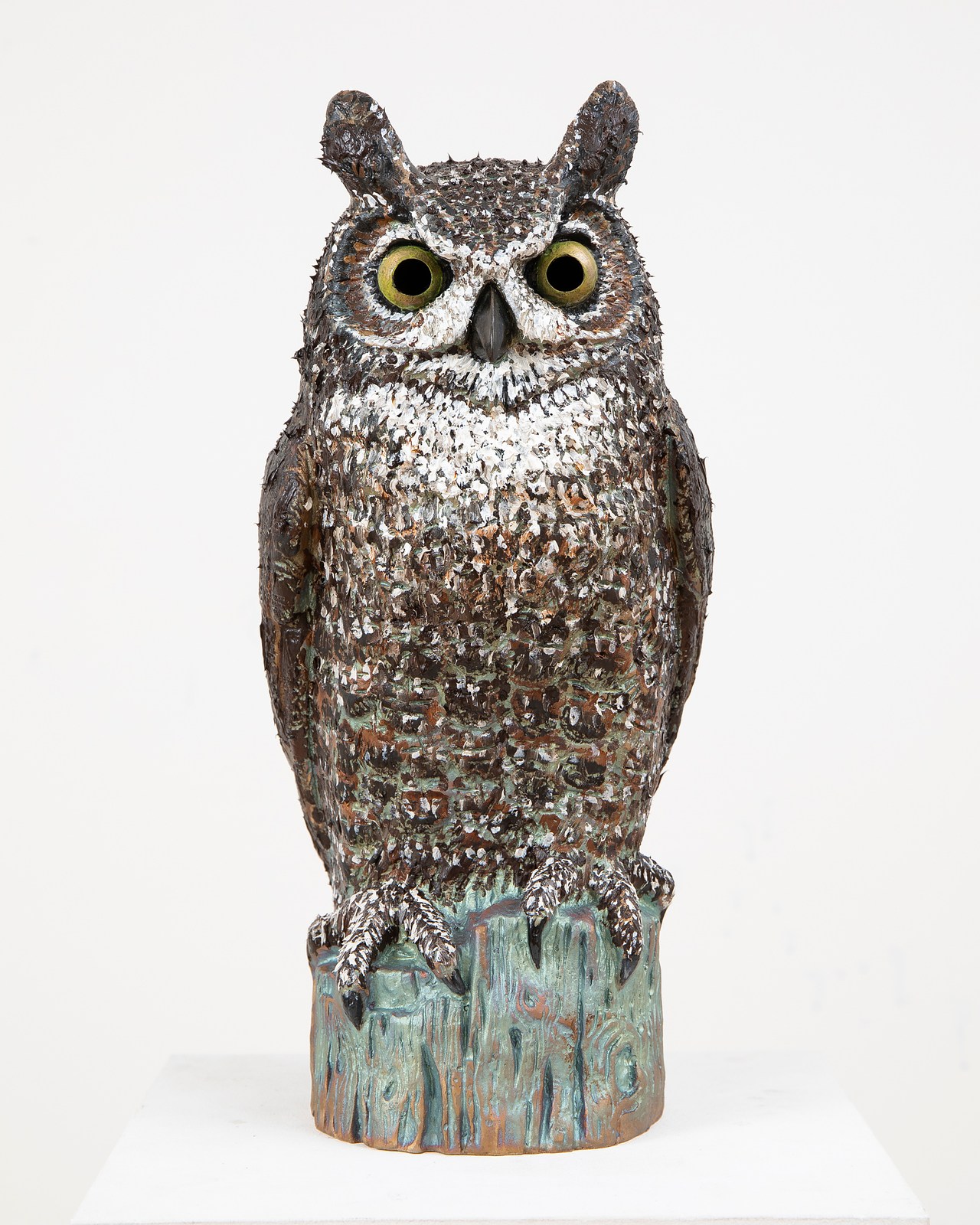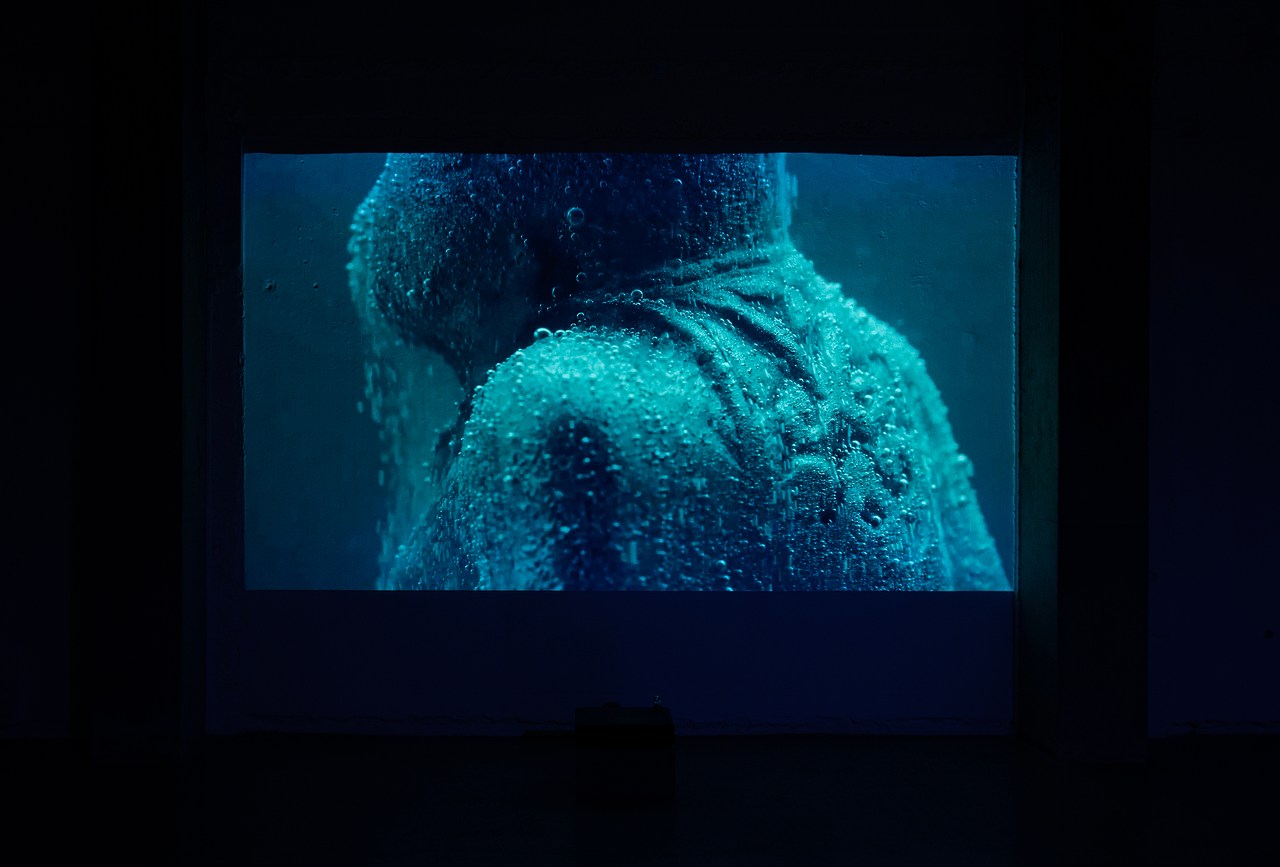The poem begins. Photograph courtesy of Maureen McLane.
For our series Making of a Poem, we’re asking poets to dissect the poems they’ve published in our pages. Maureen N. McLane’s poem “Haptographic Interface” appears in the new Spring issue of the Review.
How did this poem start for you? Was it with an image, an idea, a phrase, or something else?
This poem took wing, or distilled itself, during a conference on “Writing Practice” at Heinrich-Heine-Universität Düsseldorf in September 2022. I started writing while listening to the closing remarks. The scholar Andrew Bennett had given a talk on Keats vis-à-vis haptographics, a term I hadn’t heard before—that was one spur. Keats is someone I’ve read and thought about for a long time (in one wing of my life I work on Romantic-era poetry). Bennett had spoken about Keats’s handwriting—how moving it can be to encounter it—and his letters, and the matter of “literary remains.” Some months after the conference, I looked up haptographics—one of the first hits on Google tells you that “haptographic technology involves highly sensorized handheld tools”—is a pen such? Haptography is a technique for “capturing the feel of real objects”—is this what Keats was up to, capturing the feel of things (experiences, emotions, movements of thought)? I think so. Is this still poetry’s aim? These are questions the poem implicitly pursues, but I can only say that having written the poem. There was no thesis-in-advance.
Copyright
© The Paris Review

